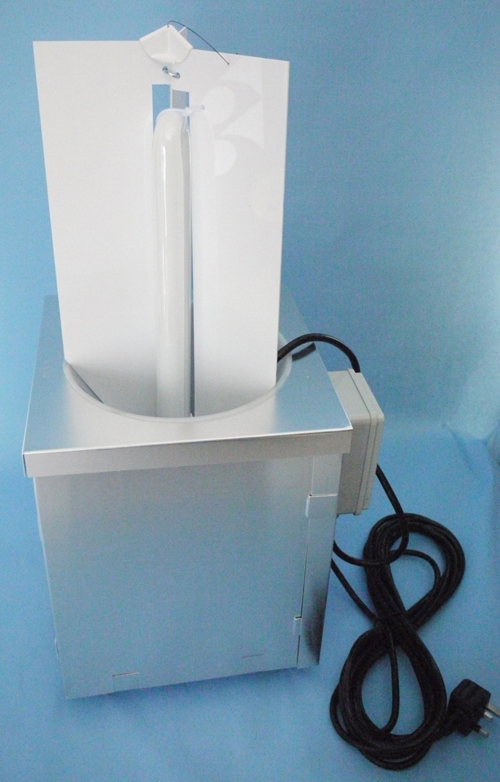In summer months this doesn’t seem to be much of a problem. Simply read a book late at night with one of your windows open and your bound to have a few of the little blighters bashing into the bedside lamp. Funnily enough that wasn’t part of the course but as a strategy it works:
1. They tend to come out at night
2. They are generally attracted to lights
3. There’s lots of them in the summer
4.They’re partial to a bit of historical fiction
So what people do is they make traps using powerful light bulbs and boxes. Egg boxes are critical too (more on that later). The moths are attracted to the light, they then fall down holes and end up trapped in the box.
There a a few decisions about what type of trap to get:
- Mercury Vapour or Actinic (mercury vapour is much brighter, attracts more moths but might be unsuitable if overlooked by other people’s houses – really bright, but more moths!)
- Mains powered or not (where are you going to trap – out in the woods or in your back garden?)
I want to catch them in the back garden and I didn’t fancy falling out with the neighbours so I went for Actinic and mains powered.
- Next decision: make one or buy one. You can find designs on the internet, such as this one: link to moth trap design. So if you have reasonable DIY skills you can build one yourself. I priced it up and found it was probably only marginally more to buy a new one from Watkins & Doncaster. I went for the Skinner type trap.

Oh and the egg boxes… It turns out that they are quite happy to sit on the egg boxes overnight as they like the rough cardboard texture. No luck if you get the cheaper plasticky egg boxes, they’re apparently no use. Presumably free range egg boxes will attract a better quality moth too.
As soon as I start catching them I’ll start posting details. There are lots of other ways to catch moths too. If I try them I’ll write about them too.
No comments:
Post a Comment
Hi, thanks for taking the time to write a comment.